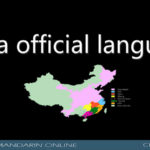Chinese New Year falls on January 28th 2017. Each year is assigned one of 12 Zodiac signs with an associated animal, and 2017 will be the year of the Rooster. The Chinese believe that each sign has associated characteristics, with people born under the Rooster sign believed to be very observant. Hardworking, resourceful, courageous, and talented, Roosters are very confident in themselves.
To help you celebrate, here are some fun facts about this holiday:
- Chinese hold their new year celebrations between the 21st of January and February 20th, depending on the Chinese lunar calendar; so although calendar years have a fixed start and end date, the Chinese New Year can be any of 31 different dates!
- A typical Chinese New Year celebration lasts for 15 days, the longest festival in the Chinese calendar. The day itself is a public holiday not just in China but in many other countries, including the Philippines, Malaysia and Indonesia. Additionally, the day is celebrated worldwide by Chinese communities.
- The New Year celebrations typically take place at home, and the events are very family-oriented. Naturally this can cause the country’s transport networks to come to a standstill as everyone travels to see their relatives and loved ones. it is estimated that more than 200 million Chinese undertake long journeys to return home for the celebrations.
- The celebration is actually known as “Spring Festival” in China, even though it falls in the middle of the winter! This is because the ancient solar calendar, which depicts 24 periods through the year, classifies the start of Spring as the period from February 4th to 18th.
- It is considered good luck to thoroughly clean the house for the festival, thus getting rid of any bad feelings. Failing to do so can bring dishonour and bad luck to the family rather than the good fortune that everyone would like.
- The main celebrations usually begin with a family gathering and meal on the eve of the Spring Festival. A typical meal will include extra luxuries and special treats as well as typical fish or chicken dishes. This is also an opportunity for the family to get together and exchange gifts.
- Chinese families will usually fill their houses with red decorationsas this is held to be a very lucky colour. The streets and public places may also be filled with red banners and signs at this time.
- Most homes will include strips of red paper, known as “Chunlian”. These contain messages known as Spring Couplets and usually convey messages of good health and fortune. A typical decoration contains four Chinese characters in gold writing – these are known as “Hui Chun”.
- It is a tradition for younger family members to receive gifts of cash from older relatives, rather than wrapped presents; the money is generally given in a red envelope, to reinforce the positive feeling. It is also common for employees to get such cash gifts as bonuses from their employers.
- China is home to the world’s fireworks industry and the Spring festival will see hundreds of thousands of displays and organised events, as well as millions of fireworks lit at home. The tradition is that the fireworks scare away evil spirits and demons. The largest displays are set off around midnight, similarly to January 1st New Year celebrations worldwide.
- The two weeks of celebrations usually end with a Lantern Festival; on the eve of the 15th day, families and friends again come together to eat and to put up lanterns or release them into the skies.
- The Lantern Festival falls on the night of the first full moon of the Chinese New Year.
- The Chinese expression for Happy New Year is “Xinnian Kuaile”, which is pronounced as “sshin–nyen kwhy–luh“. It is common for the Chinese to greet strangers as well as friends at this time, to pass on good luck and fortune for the year ahead.
- Children remain off school throughout the holiday period, and can even go a whole month before returning to the classroom.
- No list of fun facts about Chinese New Year would be complete without mention of a monster! Tradition says that Nian, a ferocious beast who preys on humans, emerges from his hiding place on New Year’s Eve, but is frightened off by the red decorations and banners!
- Traditional foods include fish, which is served at the end of the New Year’s meal and symbolizes abundance, and a sticky fruitcake called Neen Gow or Nian Gow.
- Shou Suiis the practice of staying up until midnight as a family to greet the new year.
- During the Chinese New Year, people often greet each other by shouting “auspicious phrases” thought to bring luck, like “gōng xǐ fā cái,” which translates to “Congratulations and be prosperous.” Children sometimes use the following variant of this greeting when they are feeling cheeky: “gōng xǐ fā cái, hóng bāo ná lá” That means “Congratulations and be prosperous, now give me a red envelope!”




 闽公网安备 35020302035673号
闽公网安备 35020302035673号
0 responses on "Facts of Chinese New Year"